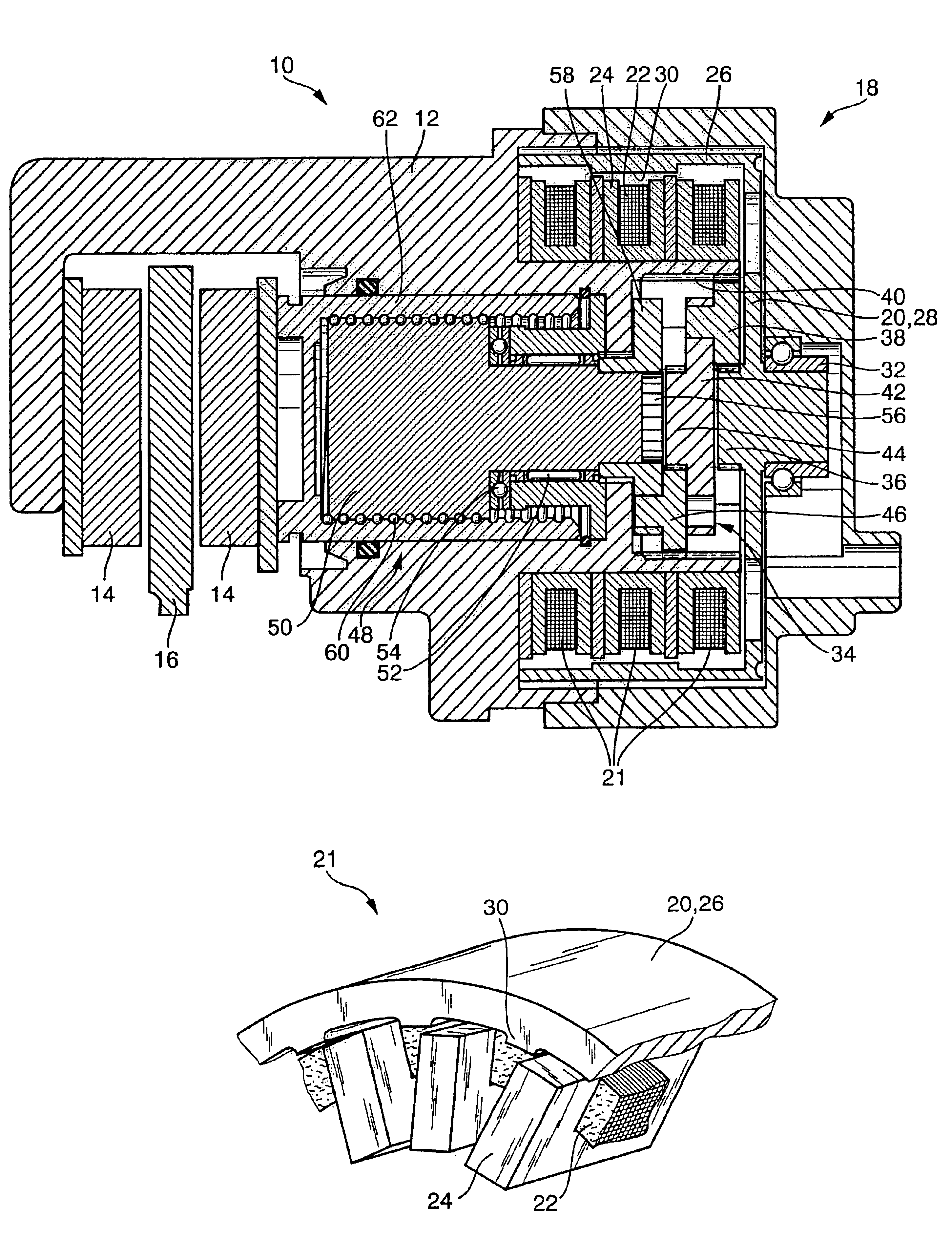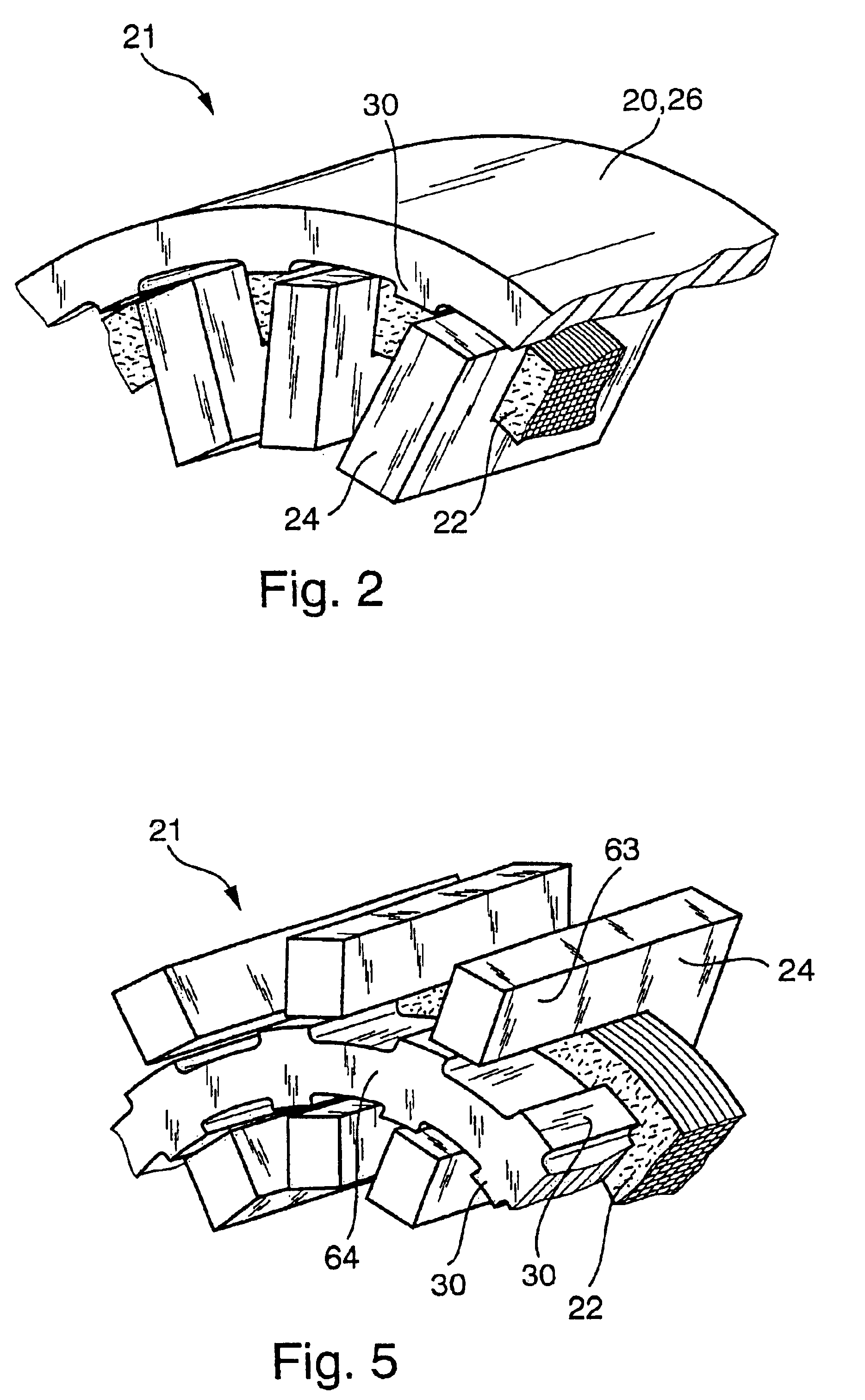Electromechanical wheel brake device
a technology of electromechanical and wheel brake, which is applied in the direction of braking system, synchronous motor, magnetic circuit shape/form/construction, etc., can solve the problems of reducing the effort and cost involved in manufacturing, not being able to accommodate or mount a large number of coils, and the attachment of coils and their attachmen
- Summary
- Abstract
- Description
- Claims
- Application Information
AI Technical Summary
Benefits of technology
Problems solved by technology
Method used
Image
Examples
Embodiment Construction
In order to avoid repetition, only to differences between the electromechanical wheel brake device 10 according to the invention shown in FIG. 3 and the wheel brake device 10 shown in FIG. 1 will be explained. Otherwise, please refer to the explanations made in conjunction with FIG. 1. Parts, which are the same, are provided with the same reference numerals. In the wheel brake device 10 shown in FIG. 3, the transverse flux motor 18 is embodied differently than in FIG. 1. The transverse flux motor 18 in FIG. 3 is likewise embodied as a hollow shaft motor, but is designed as a so-called internal rotor motor. In the transverse flux motor 18 shown in FIG. 3, the excitation device 22, 24 with the excitation winding 22 and the U-shaped yokes 24 is disposed outside the likewise cup-shaped rotor 20. The U-shaped yokes 24 are therefore placed onto the excitation winding 22 from the outside, the opening of the yokes 24 points radially inward toward the cylindrical circumference wall 22 of the...
PUM
 Login to View More
Login to View More Abstract
Description
Claims
Application Information
 Login to View More
Login to View More - R&D
- Intellectual Property
- Life Sciences
- Materials
- Tech Scout
- Unparalleled Data Quality
- Higher Quality Content
- 60% Fewer Hallucinations
Browse by: Latest US Patents, China's latest patents, Technical Efficacy Thesaurus, Application Domain, Technology Topic, Popular Technical Reports.
© 2025 PatSnap. All rights reserved.Legal|Privacy policy|Modern Slavery Act Transparency Statement|Sitemap|About US| Contact US: help@patsnap.com



